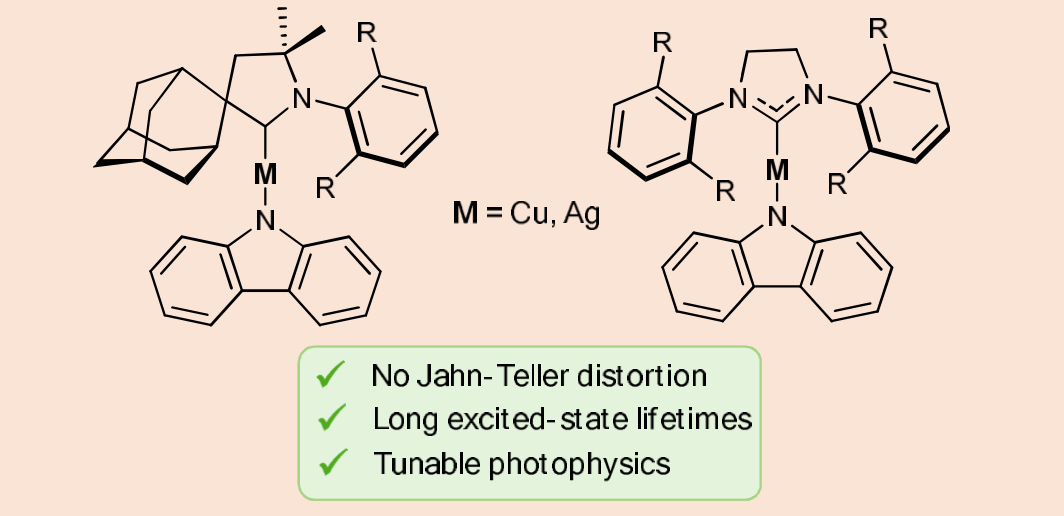Research Project 2
State of the art
- Chemical and photochemical stability of Earth-abundant metal photocatalysts remains a challenge.
- A potential solution is to move to linear dicoordinate cyclic (alkyl)(amino)carbene metal amide (CMA) complexes based on copper (and also silver) where Jahn-Teller distortion is absent and metal-ligand bands are strong and unlikely to photodissociate
- Charge transfer states are normally viewed as key to high-performance photocatalysts. Less clear is the importance of ISC rates and whether there are advantages to conducting electron transfer chemistry from a singlet or triplet manifold (or both).
 Scheme 2. Earth-abundant metal photocatalysts based on a CMA design.
Scheme 2. Earth-abundant metal photocatalysts based on a CMA design.
Progress beyond the state of the art
- Screening of existing photocatalysts, including known Earth-abundant metal photocatalysts, and cross-comparing their performance against new CMA-based photocatalysts (Scheme 2) based on the following parameters: (i) (photo)chemical stability; (ii) photo-oxidizing and -reducing power; (iii) excited state lifetime (what is the ideal excited state lifetime of a photocatalyst?).
- A detailed study of the photocatalytic mechanism will be performed by coupling steady-state and time-resolved photochemical measurements under the investigated reaction conditions, as well as electrochemical and spectroelectrochemical analysis.
- Reaction yields will be analysed as a function of additives employed, solvent medium, concentration and temperature.
Key Objectives & Expected Results
Performance Indicators
- At least two CMA-based photocatalysts showing high photostability under the reaction conditions combined with strongly photooxidizing/photoreducing properties will be developed
- Optimization of the reaction conditions for a number of model photoredox and energy transfer reaction conditions will be conducted.
- Based on the results gained, these photocatalysts will be employed in reactions developed by the other partners of the consortium.





